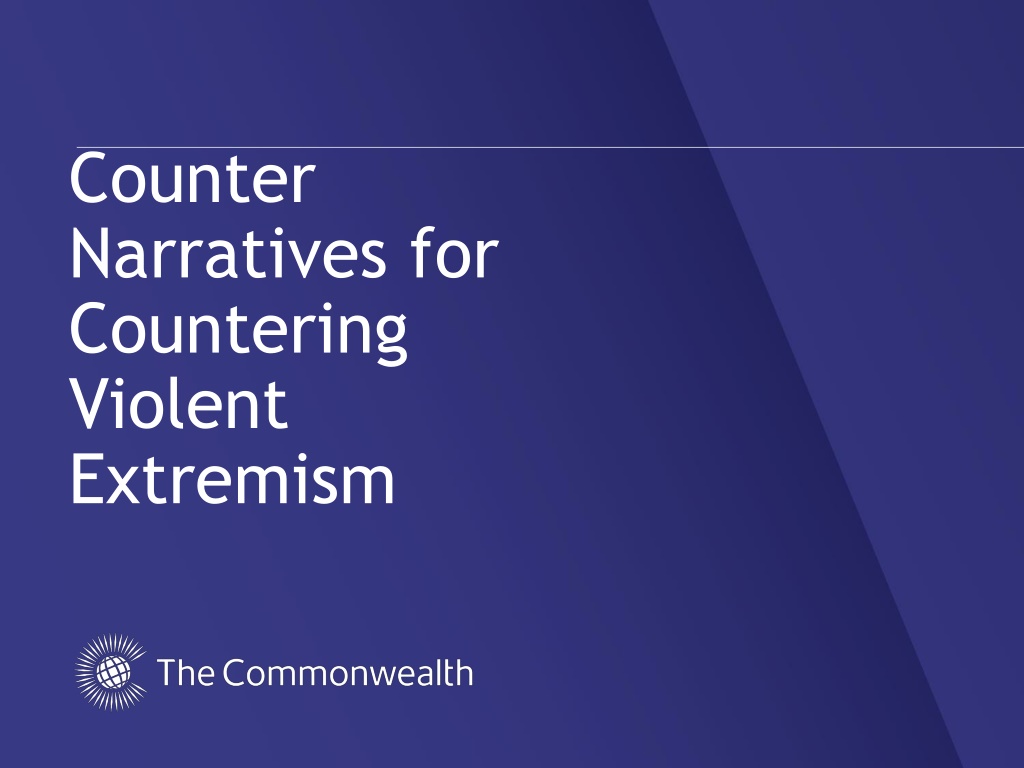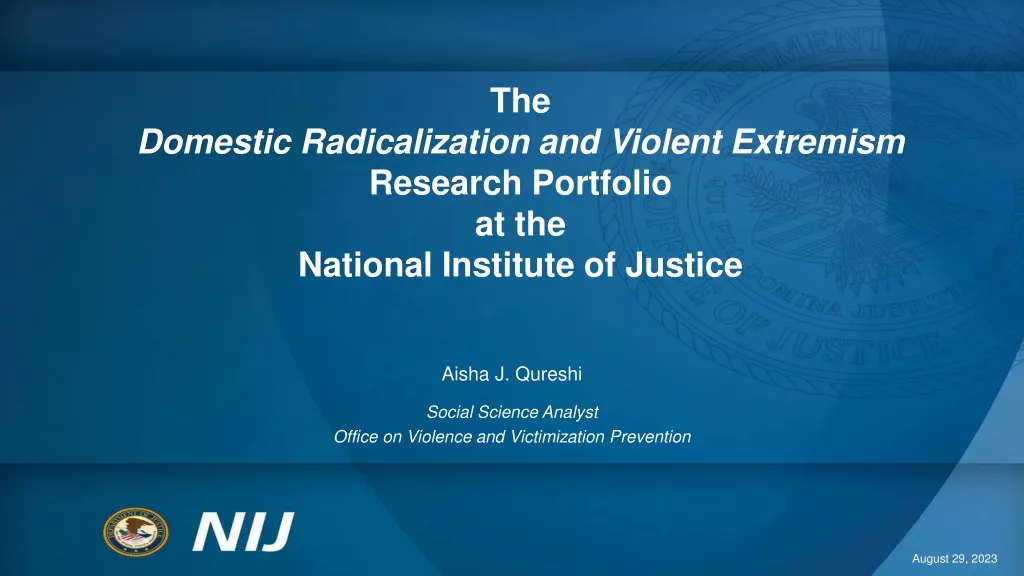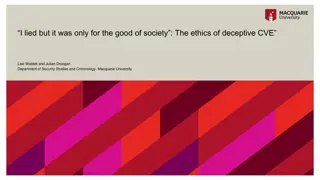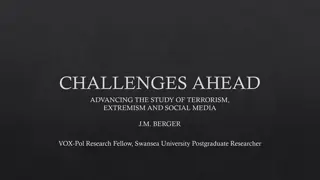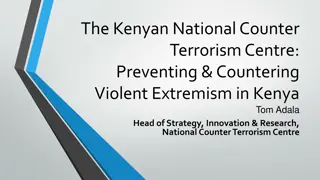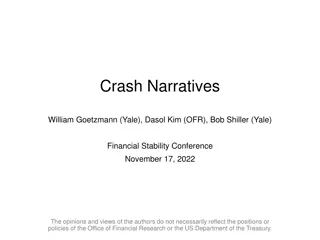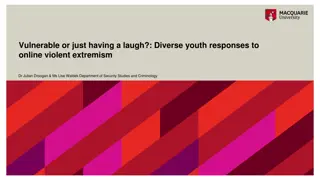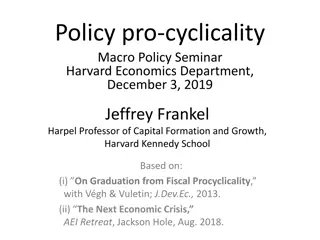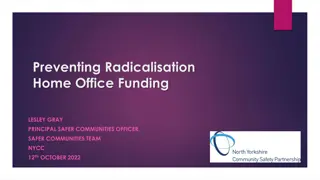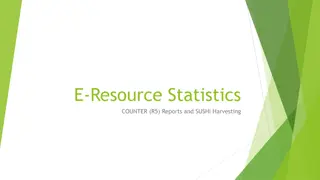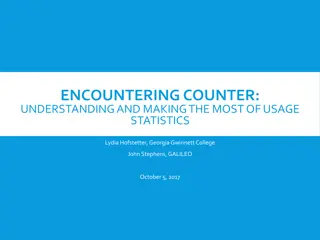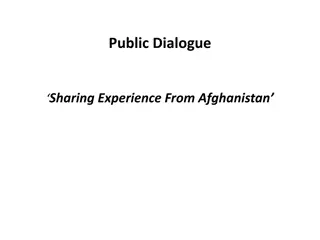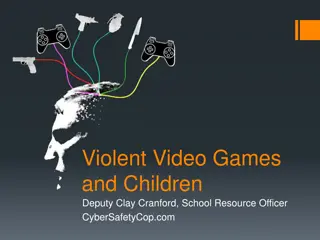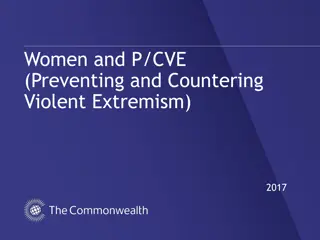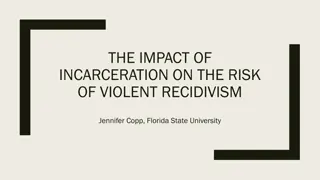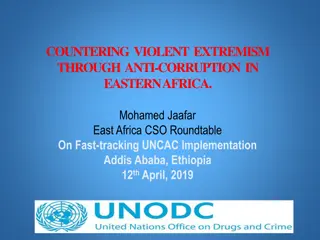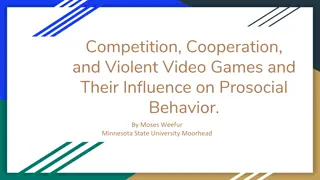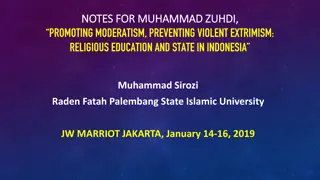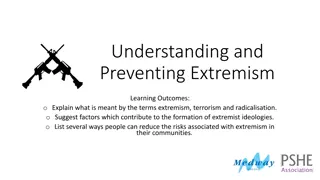Counter Narratives for Countering Violent Extremism
Extremists use compelling narratives to recruit. Effective counter narratives both online and offline are crucial for countering violent extremism. Recognizing extremist narratives is key to combating radicalization. Common messages include duty, victimization, religious reward, personal identity, belonging, and sense of purpose.
Download Presentation

Please find below an Image/Link to download the presentation.
The content on the website is provided AS IS for your information and personal use only. It may not be sold, licensed, or shared on other websites without obtaining consent from the author.If you encounter any issues during the download, it is possible that the publisher has removed the file from their server.
You are allowed to download the files provided on this website for personal or commercial use, subject to the condition that they are used lawfully. All files are the property of their respective owners.
The content on the website is provided AS IS for your information and personal use only. It may not be sold, licensed, or shared on other websites without obtaining consent from the author.
E N D
Presentation Transcript
Counter Narratives for Countering Violent Extremism
Introduction Extremists and violent extremists have always sought to use compelling messages and narratives as a means of attracting followers to their cause, In the modern age it follows that the internet and social media represent a significant and easy to use medium to inspire, radicalise and recruit young people, It is apparent that if Countering Violent Extremism (CVE) is to be effective, there must be greater focus and resources made available to the development of effective counter narratives, both online and offline, It must be noted that Counter Narrative Programmes are time and resource intensive and require committed action on the part of all stakeholders if they are to be successful
Recognising extremist narratives Extremists tend to focus on a mix of ideological, political, moral, religious and social narratives, based on a range of real or imagined grievances, Delivery methods may vary, however, the main focus today is on a range of multimedia tools and techniques (pictures, video, music) in high volume and spread across a number of platforms such as Facebook, Twitter, YouTube, Whats-app and Telegram to name only a few. Narrative are comprised of compelling stories and arguments delivered by charismatic individuals designed to influence a generation of young people who use electronic devices as their main source of information and interaction with others, The narratives provide a simplistic, unifying ideological structure, which combines facts with half-truths and misinformation.
Recognising extremist narratives -- contd Key messages and strategies may vary from group to group but there are a number of common messages and calls to action; Duty -- to protect, avenge, stand up for, defend ones brothers and sisters, Victimisation you and your people are the victims of aggression and need to stand up to it, Religious reward -- God rewards those who fulfil their obligation to defend their faith, Personal Identity real men / true believers are willing to use resistance and violence, Belonging -- its important to be part of the group taking on the aggressor. Sense of purpose to give your life meaning it is necessary join the struggle, Adventure joining the struggle is an heroic adventure and will bring you fame,
Recognising extremist narratives -- contd To inspire and radicalise young people extremists draw on common propaganda techniques, including: Bandwagon -- encouraging their targets to fit in with the crowd, Scapegoating --blaming problems on a particular group, Offering a Choice --convincing targets that the choice being offered is the only rational one, Affirmation -- presenting information as a fact when it is really open to interpretation Transference -- applying feelings or views about one issue to another issue Omission leaving out facts that would otherwise radically change the meaning of the message,
Effective Counter Narrative campaigns
Effective Counter Narrative campaigns Counter-Narrative campaigns encompass a wide range of communication activities, including: public diplomacy, strategic communications by governments and, targeted campaigns These activities are designed to raise awareness in communities and foster key relationships between government and communities, discredit the ideologies and actions of violent extremists, offer alternative narratives focusing on positive engagement and to directly counter violent extremist messaging Improving digital literacy and critical consumption among target audiences is crucial and Governments should support such programmes through schools, as well as, youth and community organisations, Strategic counter narrative communications need to be centralised and coordinated within government structures, either through a dedicated unit or by assigning lead status to a single unit or department,
Effective Counter Narrative campaigns - Contd It is essential to identify credible Community Service Organisations (CSO s) and NGO s as key partners in the campaign and to make adequate skills, capacity and funding investments in such partners, Effective counter narrative campaigns rely on accurate and clear information. Centralised information gathering and ensuring scalability will ensure that partners have the information, analytics, audience profiling needed, Sharing of good practice, resources and capacity is critical for success and this can be facilitated by government stakeholders, Government must demonstrate political will to address VE and overcome challenges of resources (human and financial), bureaucracy and follow through on commitments made to communities.
Responses to Extremist Narratives Many governments have been slow to respond to the use of the Internet and social media by violent extremists to inspire, radicalise and recruit young people to their causes, Most response programmes have focussed on reactive law enforcement measures designed to reduce the supply of extremist content through; Removal by putting pressure on private sector industry take down user- generated content or websites usually through legal means Filtering by blacklisting key words or web addresses that are intentionally dropped from search results, Hiding information by manipulating the choice-architecture of users by influencing search engine results to make content more difficult to find These measures are of limited effectiveness because of the overwhelming quantity of material available on the internet, limited human and financial capacity for such programmes , the lack of international transferability from a practical and legal standpoint,
Responses to Extremist Narratives -- contd More effective responses tend to focus on reducing the demand for such content by undermining its appeal among target audiences, It is better to help people to see through the propaganda and disinformation techniques by; Enhancing their digital literacy and helping them to be critical of what they see and read both online and offline Enable the design and dissemination of online and offline information products that challenge extremist narratives via forums and social media platforms and promote credible alternatives, Building the capacity of credible messengers by assisting civil society organisations and credible individuals to provide believable alternatives to violent extremism online Governments are generally not effective as counter-narrative messengers because they tend to lack credibility among the target audiences, and are often slow to respond due to bureaucratic constraints, The key role for governments is in managing their strategic communications effectively, and providing support, facilitation and resource to NGO s /CSO s who have the necessary credibility,
Responses to Extremist Narratives -- contd Violent extremist messaging often finds traction in communities because target audiences have a tendency to accept information provided online and in other media as true, Strong counter narrative campaigns are underscored by the development of key skills within vulnerable communities, Critical consumption skillsthat help vulnerable communities to recognise and understand the use of propaganda techniques online, Digital literacy skillsthat help vulnerable communities to understand how the Internet works, how search engine results are generated, and how to use various online tools to refine their searches, Interpretation of extremist narratives to help those most at risk to understand the narrative techniques used by extremists and how to see through them, By empowering people to become proactive and critical consumers of information communities are able to limit the impact that violent extremist narrative can have and thus limit the capacity of violent extremists to recruit effectively from within the community.
Responses to Extremist Narratives -- contd Advanced digital literacy is essential for young people and vulnerable groups if they are to be able to effectively resist efforts of extremists to propagate their narratives in an online environment. This includes: Teaching vulnerable audiences how to spot the use of propaganda techniques by extremists, thus enhancing their resilience to messaging and narratives that are untrue. Building and enhancing basic source-verification skills to assess the validity, reliability and authenticity of the information they consume, both online and offline. Understanding of the architecture and functionality of the Internet and how this impacts the nature and quality of information presented to users. It is essential that users become proactive consumers of information and that they engage with the content and respond with messaging and narrative of their own which serve to refute the inaccuracies put forward by extremists.
Concluding thoughts The primary objective of counter narratives should be to sow seeds of doubt among at risk communities who are exposed to VE influences, and to highlight viable alternative approaches and behaviours. Being clear about campaign objectives is essential. Each campaign should be specific there is no one-size-fits-all . Counter narratives are a long term strategy success is seldom achieved overnight sustained efforts is most effective. Campaigns should be as compelling and professionally produced as possible. Quality is essential! It is important to think of Counter Narratives in terms of both online and offline. Most successful campaigns are a judicious blend of the two.
Concluding thoughts - Contd When identifying key messengers for a campaign, ensure they have necessary technical support to be able to fully exploit online and offline communications channels. Governments and communities engaged in counter narrative campaigns should seek to work with private sector companies both digital and traditional media. Remember that there are many resources, ideas and strategies that have been produced and deployed elsewhere in The Commonwealth (and beyond) do not hesitate to draw on the experience and content developed elsewhere. Also be prepared to share what has been successful in your efforts.
Head of Unit: Mark Albon Email: Tel: m.albon@commonwealth.int +44 20 7747 6540 Presented by: Patricia Crosby Email: Tel: p.crosby@commonwealth.int +44 20 7747 6278 Presented by: Assan Ali Email: Tel: assan.ali@commonwealth.int +44 20 7968 2611
